- Home
- The Winter Garden
- Tree Bark A-C
The Colors and Textures of Tree Bark Will Enhance Your Winter Garden
The texture of tree bark becomes an important element in winter when the shedding of leaves exposes trunks and branches. The variety of colors and textures is fascinating. The bark’s texture may change as the tree matures. The bark of a black locust (Robinia pseudoacacia), for instance, is quite smooth when young, becoming deeply furrowed as it ages. Conversely, a paperbark maple (Acer griseum) will exhibit its flaking, exfoliating characteristics when very young. One of our favorites in the South is crape myrtle (Lagerstroemia indica) with bark that peels to reveal smooth pinkish or grayish bark beneath. Some trees have colored bark, like the famous white bark of the canoe or paper birch (Betula papyrifera), or the dark red stems of a red-osier dogwood (Cornus sericea). Imagine the beauty of a hedge or mass of red-osier dogwood surrounded by snow! Site a tree, such as a river birch (Betula nigra) with its flaking bark, where you can easily admire it as you pass it on a walkway or look out a window.
Maple Bark
Acer buergerianum, trident maple—smooth gray bark, fissures and splits with age
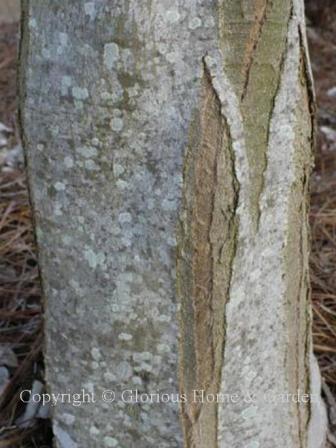 Acer buergerianum
Acer buergerianumAcer davidii, David maple--handsome pale grey bark with green striping. Also known as stripebark or snakebark maple
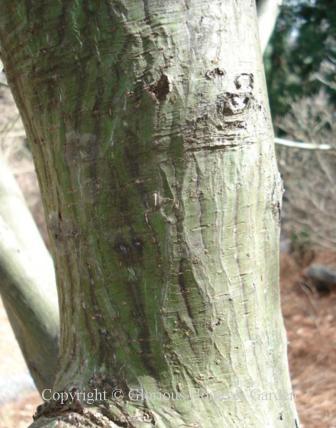 Acer davidii
Acer davidiiAcer griseum, paperbark maple—exfoliating reddish bark, even on young trees
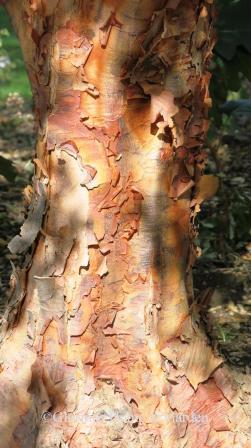 Acer griseum bark
Acer griseum barkAcer palmatum 'Bloodgood' Japanese maple, interesting dappled grey effect
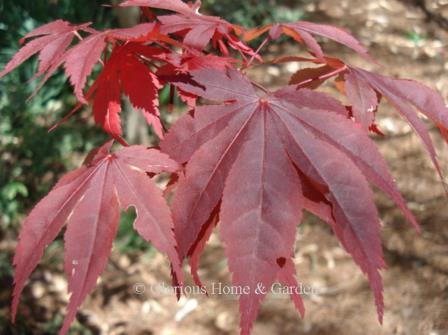 Acer palmatum 'Bloodgood'
Acer palmatum 'Bloodgood'Acer palmatum ‘Nishiki gawa,’ Japanese pinebark maple--has rough-textured bark resembling pine bark. A good choice for a small specimen tree or bonsai.
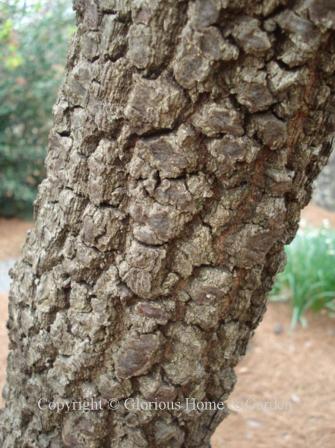 Acer palmatum 'Nishiki gawa'
Acer palmatum 'Nishiki gawa'Acer palmatum ‘Sango Kaku,’ coral bark Japanese maple—coral color on young shoots
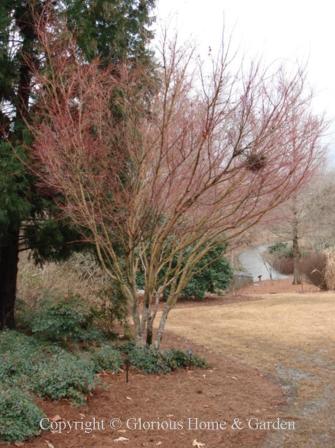 Acer palmatum 'Sango Kaku'
Acer palmatum 'Sango Kaku'Acer saccharum, sugar maple—a mature sugar maple is known for its glorious fall color, but the bark on a mature tree is interesting, too. It develops vertical furrows with age and plates of bark that lift up at the edges giving it a shaggy appearance.
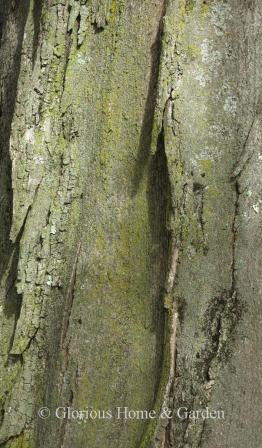 Acer saccharum bark
Acer saccharum barkAcer triflorum, three-flowered maple—flaky, gold and brown bark gives this tree excellent ornamental value in winter
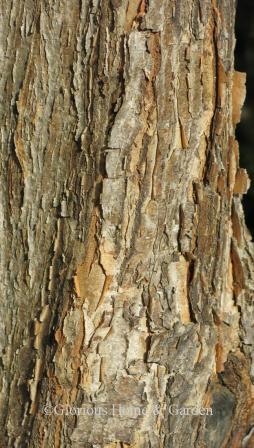 Acer triflorum bark
Acer triflorum barkAesculus californica, California buckeye—smooth silver-gray
Aesculus hippocastanum, common horsechestnut—gray to brown, exfoliates with age
Amelanchier arborea, serviceberry—smooth and grey when young, becoming furrowed with age
Arbutus menziesii, Pacific madrone—grayish brown and splits into longitudinal fissures
Birch Bark
Betula lenta, sweet birch or cherry birch—shiny dark reddish-black with prominent horizontal lenticels and a distinctive wintergreen scent when crushed
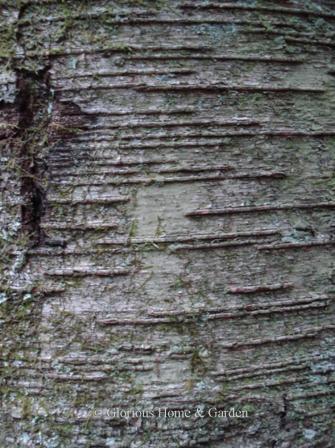 Betula lenta
Betula lentaBetula nigra, river birch—peeling, exfoliating tree bark
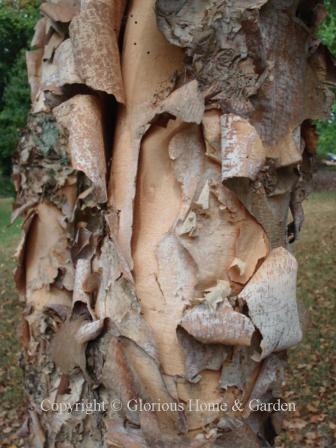 Betula nigra
Betula nigraBetula papyrifera, paper birch—famous white bark that peels in thin horizontal strips revealing reddish inner bark. Indians used to make canoes and shelter. Best in Northern zones.
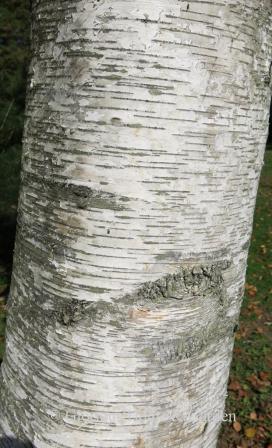 Betula papyrifera bark
Betula papyrifera barkBetula pendula, European weeping birch—whitish bark when young, becoming mostly dark with age
Carpinus betulus, European hornbeam-- smooth, bluish gray; hard, muscular fluted trunk
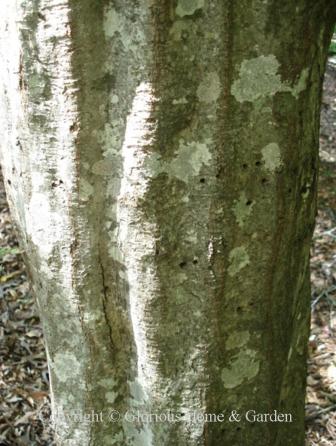 Carpinus betulus
Carpinus betulusCarya ovata, shagbark hickory--long, straplike sheets of bark dangle off mature trees giving them their characteristic shagginess
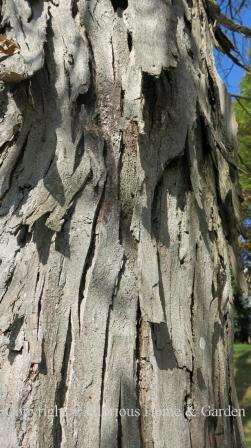 Carya ovata
Carya ovataCercidiphyllum japonicum, katsuratree—the bark becomes shaggy with age on a tree that is beautiful in all seasons. Outstanding specimen tree.
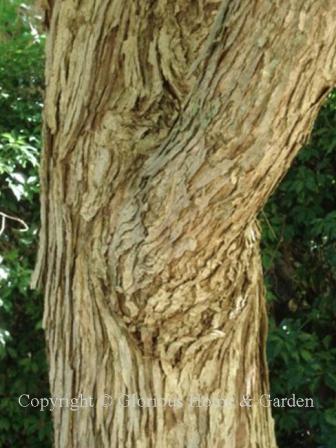 Cercidiphyllum japonicum bark
Cercidiphyllum japonicum barkCercis canadensis, Eastern redbud—dark, blackish bark stands out in winter, good foil for the pink buds which pop out directly from the branches. Younger bark looks much smoother and develops this sort of criss-cross pattern with age.
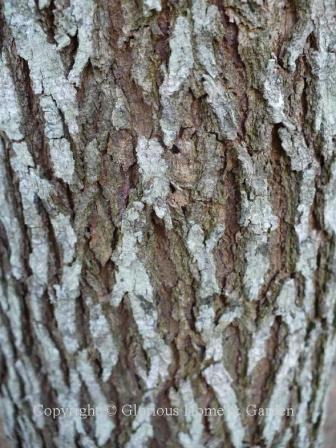 Cercis canadensis
Cercis canadensisChionanthus retusus, Chinese fringetree--multiple trunks develop with bark in shades of gray, brown and tan may be furrowed or exhibit exfoliating characteristics.
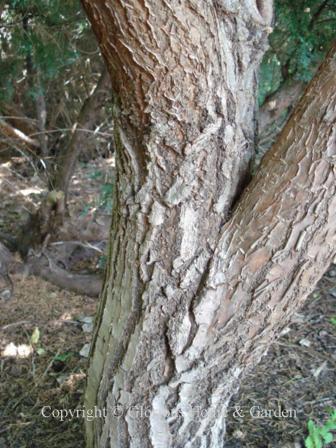 Chionanthus retusus
Chionanthus retususCladrastis kentukea, American yellowwood--smooth gray bark with lighter horizontal patches giving a striped effect. Similar to American beech.
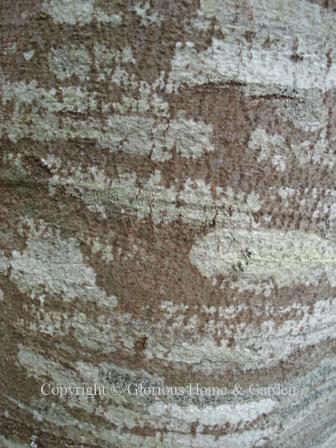 Cladrastis kentukea
Cladrastis kentukeaDogwood Bark
Cornus alba, Tatarian dogwood—red twigs in winter
Cornus florida, flowering dogwood—rough, gray tree bark in small blocks, a good identification feature
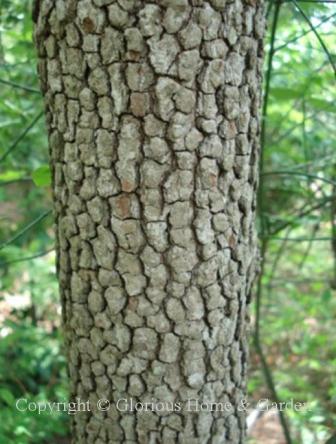 Cornus florida
Cornus floridaCornus kousa, Kousa dogwood--smooth gray bark exfoliates to show tan patches, very different from Cornus florida
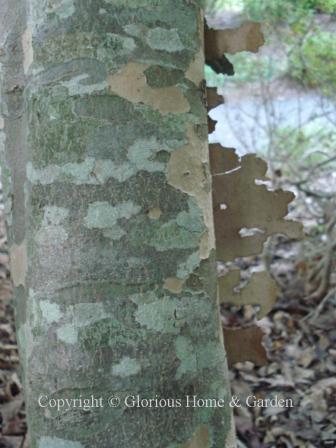 Cornus kousa
Cornus kousaCornus officinalis, Japanese Cornel dogwood—interesting showy bark with gray, brown and orangey patches
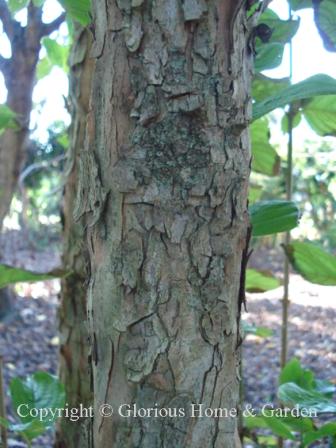 Cornus officinalis
Cornus officinalisCornus sericea, redosier dogwood—red twigs in winter. Cornus sericea ‘Lutea’, yellow twig dogwood—has yellow twigs in winter.
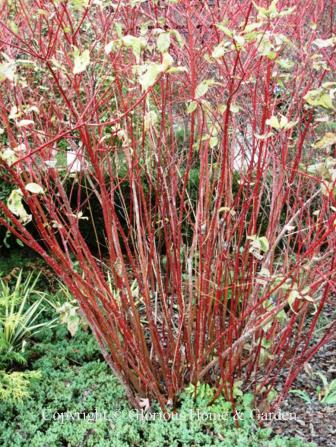 Cornus sericea
Cornus sericeaCornus wilsoniana, Wilson's dogwood--unusual ghostly patchy white and gray bark. Would be very interesting to use for a white garden in the moonlight
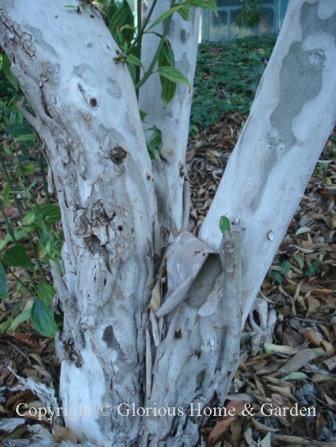 Cornus wilsoniana
Cornus wilsonianaCorylus avellana ‘Contorta’, European filbert, “Harry Lauder’s Walking Stick”—bark is smooth, brown, but stems are fantastically twisted and corkscrewed making for good winter interest
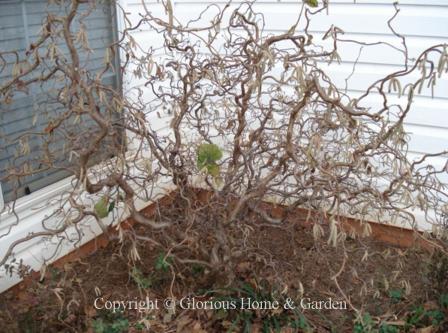 Corylus avellana
Corylus avellanaCrataegus marshallii, parsley hawthorn--a small native tree of the southeastern U.S. with patchy, scaly bark that is quite ornamental.
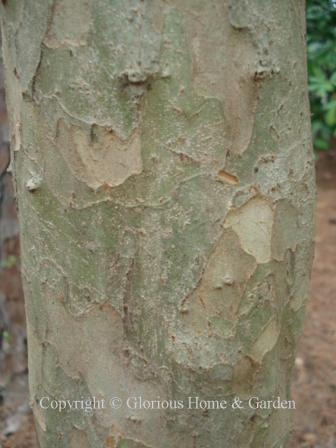 Crategus marshallii
Crategus marshallii
Plant of the Month
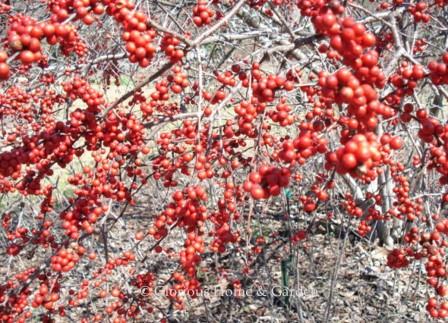
Ilex verticillata
Winterberry holly
Updated new USDA Plant Hardiness Zone Map 2023.